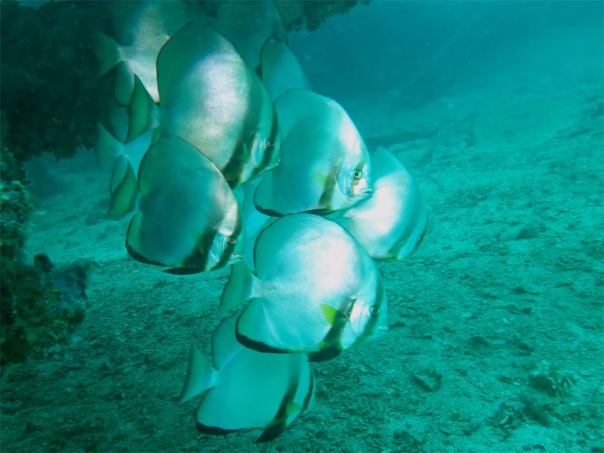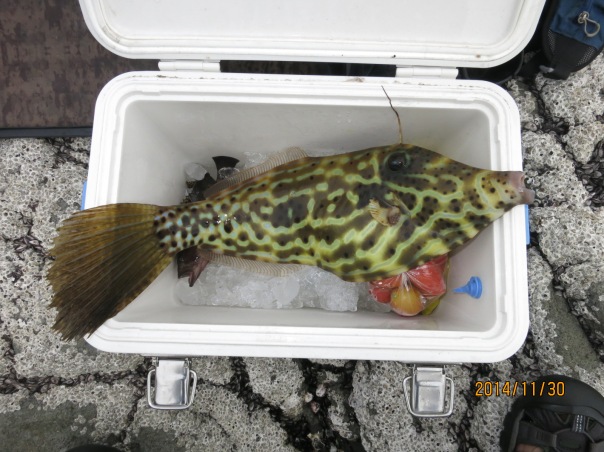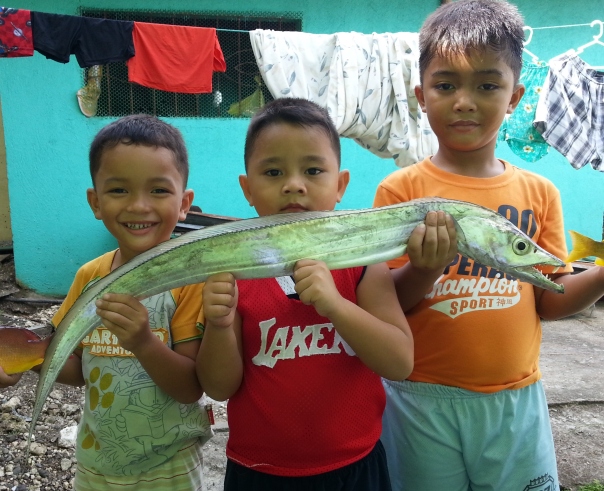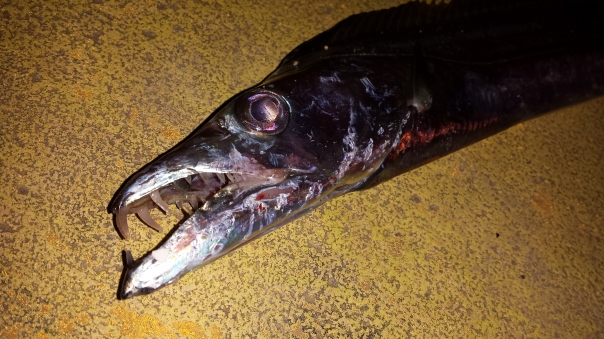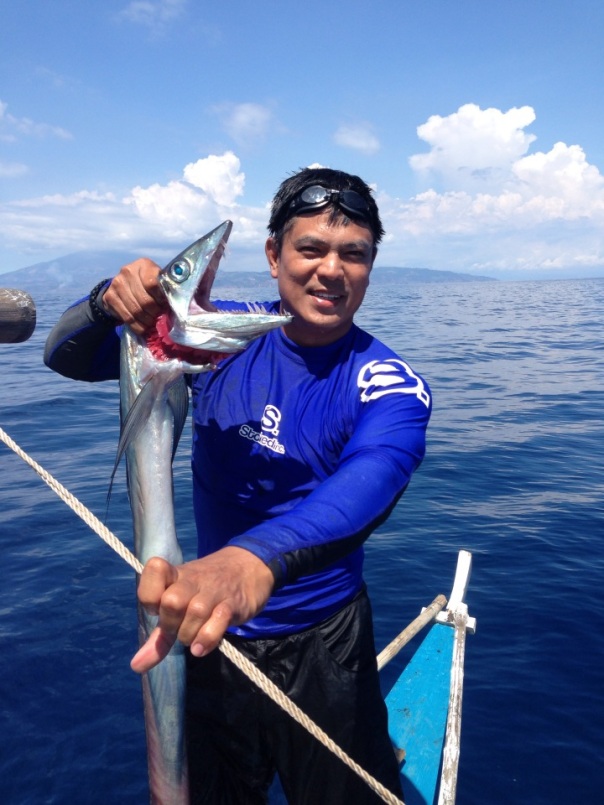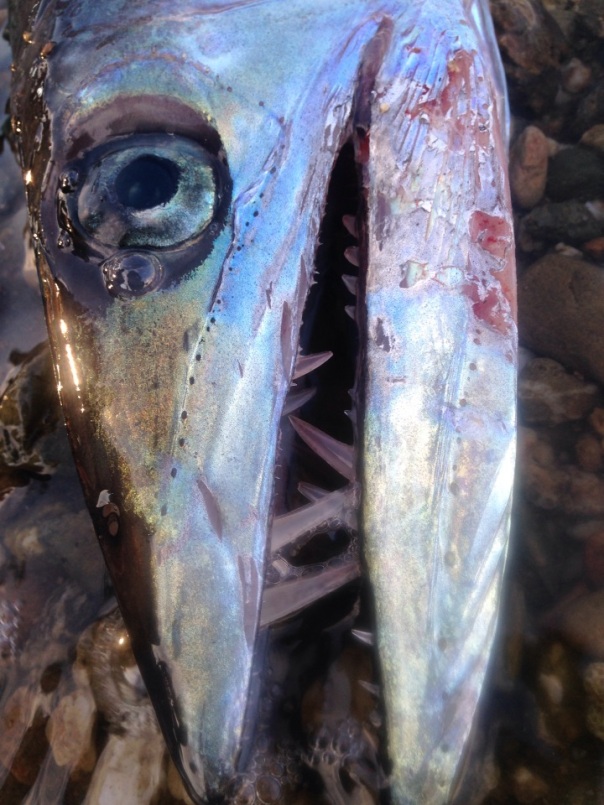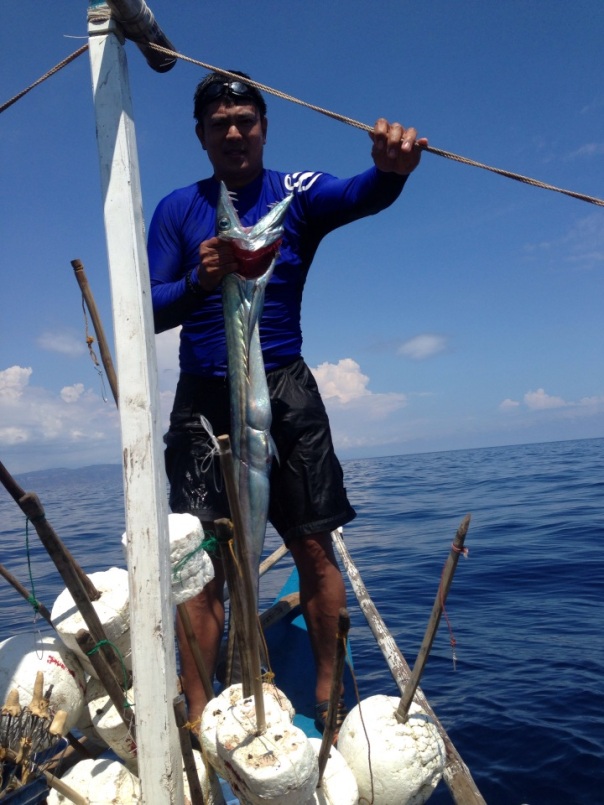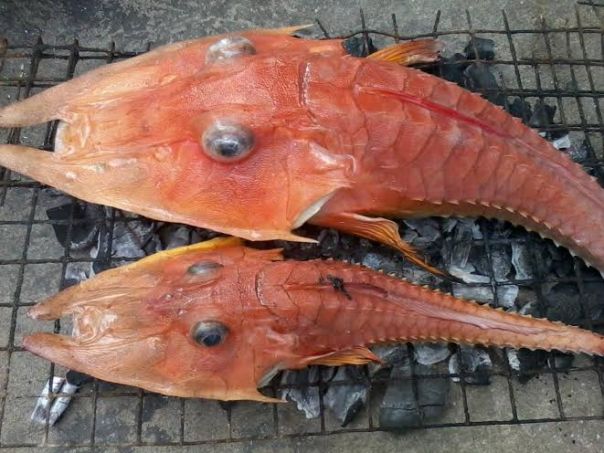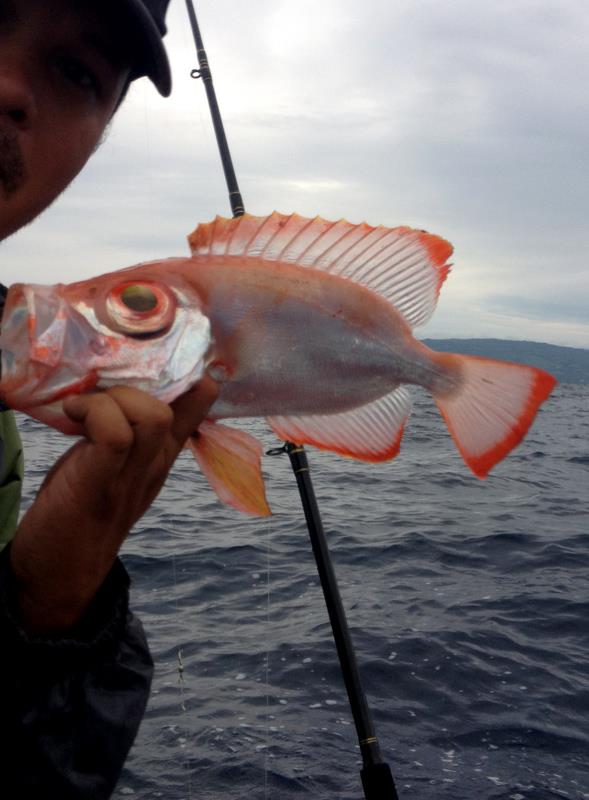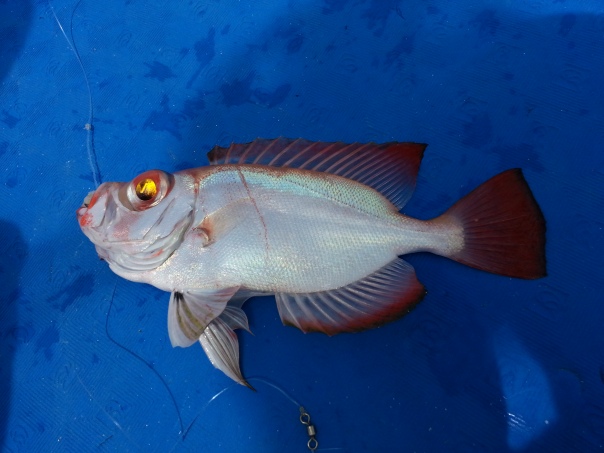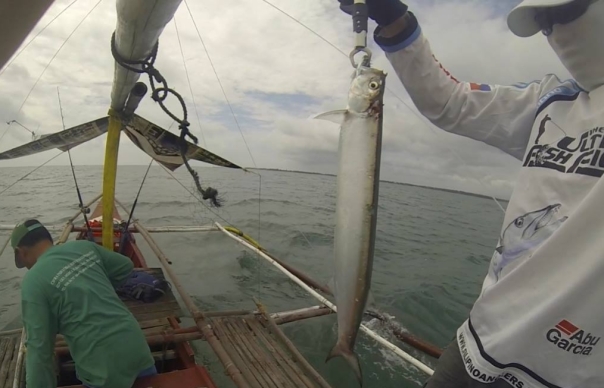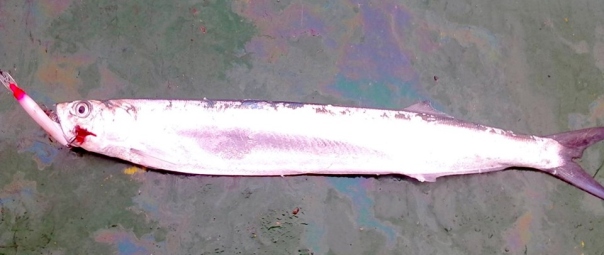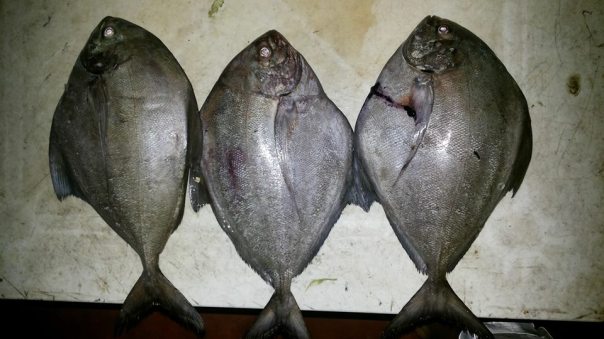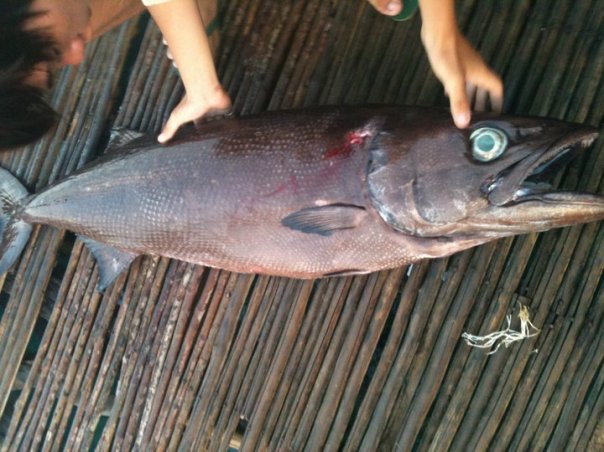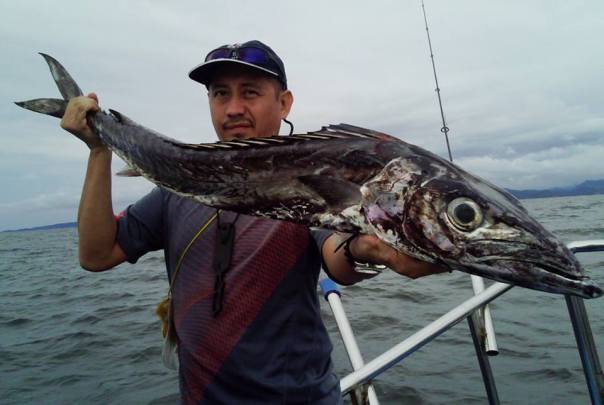Category Archives: Rare/Bizarre
Orbicular Batfish ( Platax orbicularis )
Common Name: Batfish,
Local Names: Dahong-Gabi (Tagalog); Alibangbang, Lagupan (Cebuano)
Max Size: 60 cm
Biodiversity: Marine, Brackish, Reef-Associated,
Depth: 5 – 35 m
Fishing Season: All Year Long
Minimum Size Limit: none
Recommended Bait/Lures: Shrimp, cutbait
IUCN Red List Status: Not Evaluated (NE)
Batfish are common throughout the seas of the Philippines. Juveniles are often seen around shallow reefs and sandy flats, while adults are most common around wrecks and deeper structures. Their name in Tagalog: Dahong-Gabi literally means Taro Leaf, and comes from this fish’s broad but flat body.
Batfish are edible however they have a very bitter skin which ruins the flavor of the meat if eaten.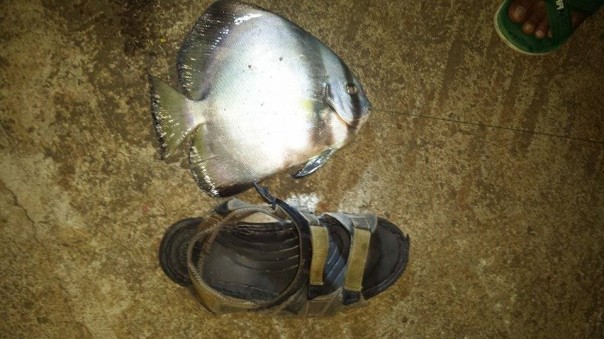
Scribbled Filefish ( Aluterus scriptus )
Common Name: Filefish, Tilapia
Local Name: ??? (Tagalog); Saguksok (Cebuano)
Max Size: 110 cm (2.4 kg)
Biodiversity: Marine, Reef-Associated,
Depth: 3 – 120 m
Fishing Season: All Year Long
Minimum Size Limit: none
Recommended Bait/Lures: Alae, Seagrass, Small crustaceans
IUCN Red List Status: Not Evaluated (NE)
Hairtail ( Trichiurus haumela )
Common Name: Hairtail, Ribbon fish, Cutlass Fish, Belt Fish, Frost Fish
Local Name: Balila, Espada (Tagalog); Diwit (Cebuano)
Max Size: 2 m (5 kgs )
Biodiversity: Marine, Benthopelagic,
Depth: 0 – 350 m
Fishing Season: All Year Long
Minimum Size Limit: None
Recommended Bait/Lures: fish, minnow lures
IUCN Red List Status: Not Evaluated (NE)
This is one of the stranger looking fish found in the seas of the Philippines. There are over 40 different species of cutlassfish in the world which all share a similar shiny, blade like appearance. They silvery sides of this fish are so brilliant that the colors of the rainbow can be seen when a camera flash or sun light are reflected off it.
In the tperate seas these fish are known as frost fish because their appearance in late fall often corresponds with the coming of the frost. Here in the Philippines however we have noticed that they appear to be more prevalent in the months of Habagat or monsoon season. During this time schools of cutlassfish move closer to shore.
Surprisingly these fish readily take lures and so can be caught by Anglers fishing from piers and rocky coastlines. For some reason these fish seem to prefer red head lures and to feed at night.
Armored Sea Robin ( Satyrichthys welchi )
Common Name: Sea Robin, Gurnard, Crocodilefish
Local Name: ??? (Tagalog); ??? (Cebuano)
Max Size: 50 cm
Biodiversity: Marine, Deep Water, Benthic
Depth: 80 – 228 m
Fishing Season: All Year Long
Minimum Size Limit: none
Recommended Bait/Lures: Shrimp, small fish and crustaceans
IUCN Red List Status: Not Evaluated (NE)
This bizarre looking little bottom feeding fish belongs to the family of sea robins. These two were caught off Cuaming Island, Bohol while deep bottom fishing. These fish are edible.
Purple Spotted Big-Eye ( Priacanthus tayenus )
Common Name: Big-Eye, Glasseye, Bullseye Local Name: Mata -Hari, Siga (Tagalog); Baga-Baga, Bukaw-Bukaw, Siga, Dilat (Cebuano) Max Size: 35 cm Biodiversity: Marine, Reef-Associated Depth: 20 – 200 m Fishing Season: All Year Long Minimum Size Limit: 6 inches Recommended Bait/Lures: Shrimp, small fish and crustaceans IUCN Red List Status: Not Evaluated (NE) This is a species that is commonly seen in the fish markets around the country. It is a good food fish though they do not grow very large. Fish belonging to this Family are easy to identify due to their large eyes from which there name comes. They are mainly a reef associated species and can be caught by anglers fishing around both inshore and offshore reefs.
Wolf Herring ( Chirocentrus sp. )
Common Name: Wolf Herring
Local Name: Buan-Buan, Bidb-bid (miss-identified) (Tagalog); ?? (Bisaya)
Max Size: 146 cm (40+kgs)
Biodiversity: Saltwater, Brackish, Reef associated
Depth: 1 – 120 meters
Fishing Season: All Year Long
Minimum Size Limit: None
Recommended Bait/Lures: Small fish or lures
IUCN Red List Status Status: Not Evaluated (NE)
This sly predator is quite rare and elusive. It is often mistaken for a Tarpon or a Ladyfish due to its silvery sides and shape. It can be distinguished however by its large grotesque fangs and long sardine shaped body. These can be caught on lures, trolling or with live or dead bait.
There are two main species of Wolf Herring that can be found around the country, the Whitefin and the Blackfin. We believe this is the Blackfin (nodus) species however we are not sure.
Black Pomfret ( Parastromateus niger )
Common Name: Pomfret,
Local Name: Duhay, Pampano (Tagalog); ?? (Cebuano)
Max Size: 75 cm
Biodiversity: Marine, Reef Associated
Depth: 1 – 100+ m
Fishing Season: All Year Long
Minimum Size Limit: None
Recommended Bait/Lures:
IUCN Red List Status: Not Evaluated (NE)
We received a report recently that these fish are being caught in the Tanon Strait in between Negros and Cebu. They are quite rare in those waters and the local fishermen do not have a local name for them. These fish are mainly caught in nets though they are likely to be taken on sabiki type rigs because they feed mainly on zooplankton.
Oilfish ( Ruvettus pretiosus )
Common Name: Oilfish
Local Name: ?? (Tagalog); Penahon (Cebuano)
Max Size: 300 cm (63.5 kgs)
Biodiversity: Marine, Benthopelagic, Oceanodromous
Depth: 100 – 800 meters
Fishing Season: None
Minimum Size Limit: None
Recommended Bait/Lures: Fish (cutbait or whole) , squid
IUCN Red List Status Status: Not Listed
This species is a deepwater species related to the Snoek (Snake Mackerel). These are relatively rare to see around the country due to the depth at which they live. These fish are called oilfish due to the high oil content of their flesh. They are edible and delicious however eating large quantities of this fish’s flesh causes a laxative effect which can be quite disturbing. It is recommended that if you eat this fish that you don’t eat very much.
